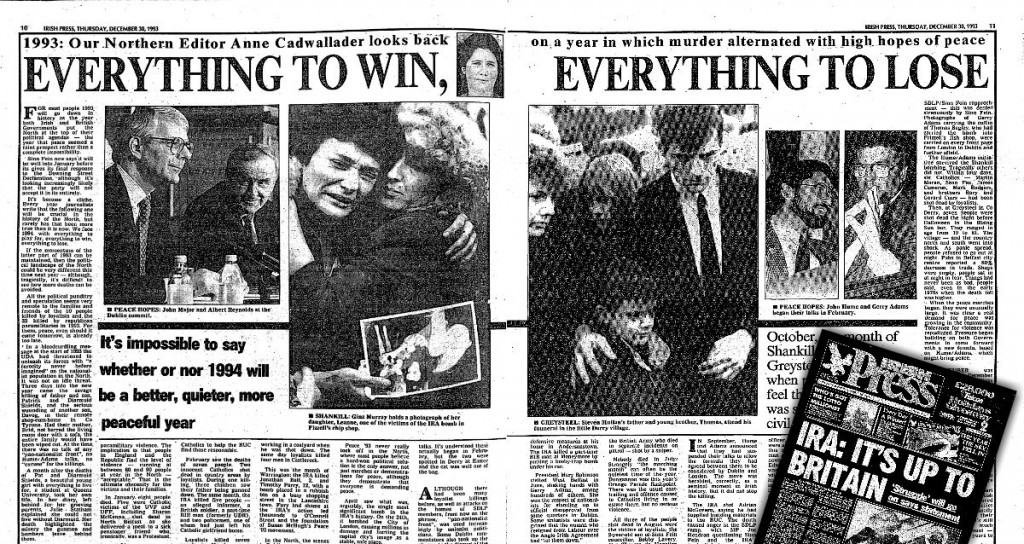
Downing Street Declaration Signed 15.December.1993
On this day in 1993, the Downing Street Declaration was signed between the British and Irish governments. After almost a quarter of a century armed conflict, the declaration was seen as an important step on the road to peace. In the early 1990s talks between the leaders of the SDLP and Sinn Fein had led to the latter accepting the need for unionist consent with regard to the future of Northern Ireland, but despite this, the conflict still raged. In late 1993 the British and Irish governments wishing to go further than the Hume-Adams talks stressed that a number of things were necessary for a lasting peace. Led by John Major, British Prime Minister, and An Taoiseach, Albert Reynolds the Downing Street Declaration stated that the British government agreed to ‘uphold the democratic wish of a greater number of the people of Northern Ireland on the issue of whether they wish to support the Union or establish a sovereign united Ireland.’ For their part, the Irish government accepted that any attempt to establish a united Ireland would have to have majority consent within Northern Ireland. It also accepted that parts of the 1937 Constitution were unacceptable to unionists and agreed – in the context of an overall settlement – to change that document.
Despite the optimism from both governments the declaration was not fully accepted by the leading political parties in Northern Ireland. Sinn Fein believed that unionists still had the right to veto any move towards reunification, while the Ulster Unionist Party (UUP) argued that the declaration did more for nationalism than it did for them arguing that it had a ‘green tinge’. The IRA responded to the document at the end of December claiming that while they wanted ‘a just and lasting peace’ the British government would have to do more with the declaration to find a permanent solution.
Download Source Irish Press 30.December.1993 Page 1 , 4 , 10-11
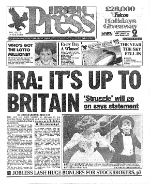
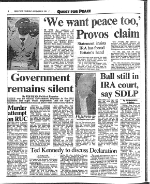
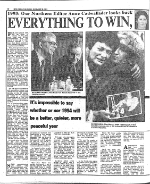
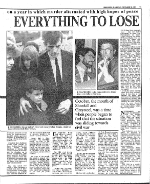
Source: Irish Press, Thursday, December 30, 1993




 Source: Irish Press, Thursday, December 30, 1993
Source: Irish Press, Thursday, December 30, 1993